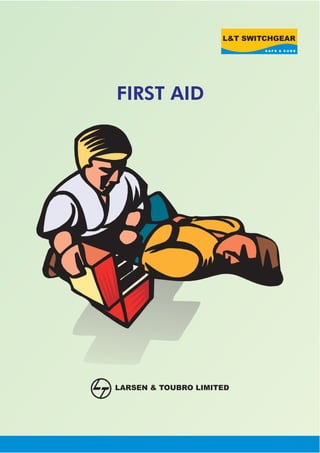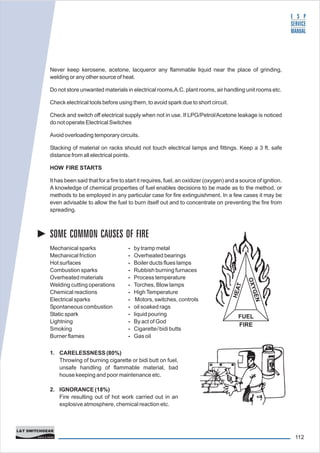The document provides information on first aid and fire safety. It discusses first aid procedures for injuries like cuts, burns, fractures, and shock. It also covers fire classification, fire prevention methods, fire extinguisher types, and how to operate extinguishers. The key points are:
- First aid is necessary to make the patient comfortable and prevent further injury until medical help arrives. Basic first aid procedures are described for common injuries.
- Fires are classified by type (A, B, C, D) to determine the appropriate extinguisher. Different extinguishers use methods like cooling, smothering, or starving to put out different fire classes.
- Fire prevention focuses on good housekeeping











